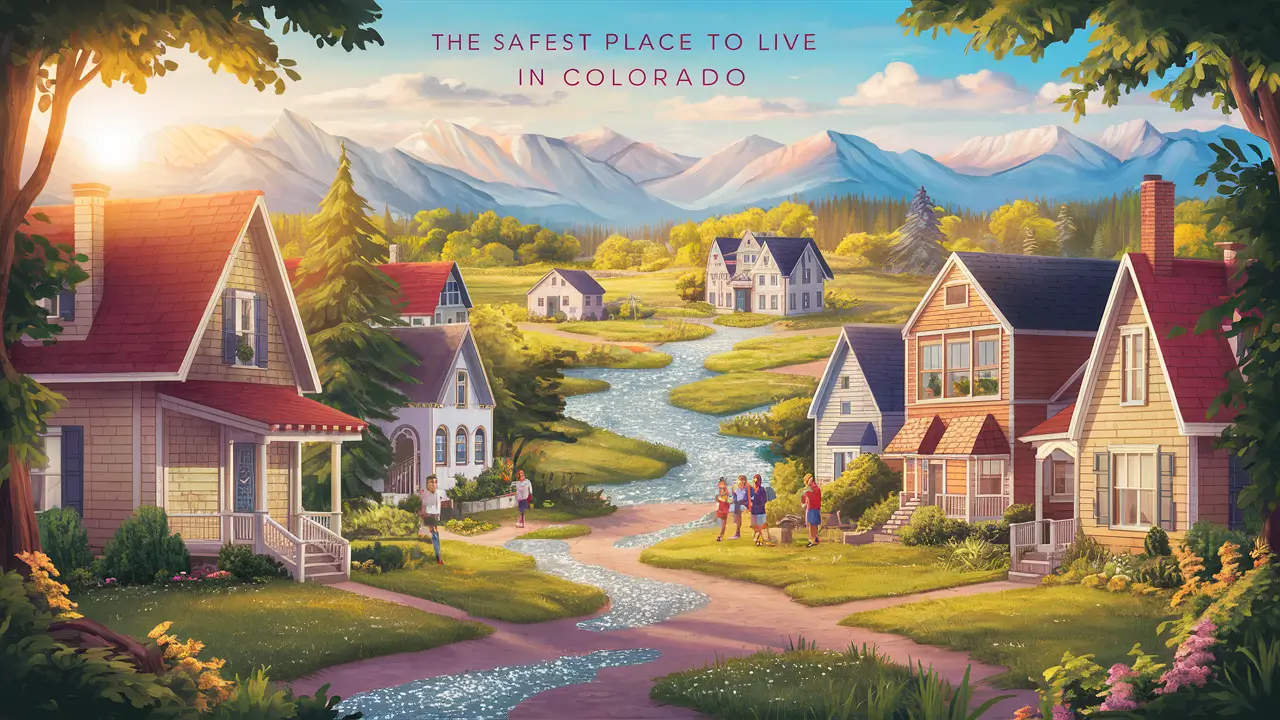
Colorado is considered a beautiful state famous for its spectacular natural views, active cities, and an impressive number of outdoor activities. Nevertheless, another important consideration comes into play when the person is transferring to a new state. Population densities, crime rates, and natural disaster risks are some of the considerations that one needs to consider when looking for areas that are safe in Colorado. This guide looks at some of the important statistical figures and facts that you need to consider to locate areas of low risk that also will suit your preferred active and social lifestyle.
Evaluating Crime Statistics
As with any location, no town is immune to crime, but some locations in Colorado have lower crime rates compared to others. While determining the most safe to live in, it is, therefore, logical to consider the property crime rate together with the violent crime rate.
Looking at FBI crime stats reported recently, most of the cities categorized as safe in Colorado together with the small towns have significantly lower rates of property crimes than the national average of approximately 25 per 1000 people. Other cities such as Wearing, Firestone, Johnstown, Berthoud, and Dacono have low property crime rates, below fifteen per thousand residents.
At the same time, Colorado has a rate of violent crime of approximately 4 per 1000, which already makes it 36% less than the average rate throughout the United States. Specifically, among those cities in Colorado, Firestone, Windsor, Frederick, Dacono, and Erie all have a violent crime rate of less than 1 per 1,000 residents, which more than proves their low crime rates.
Weighing Natural Disaster Risks
Apart from crime rates, the climatic conditions and geographical characteristics of Colorado differ and so does the type of natural disaster if any, that is likely to occur in the region. When choosing the best place to take your family, it is essential to consider your exposure to different disasters which may include wildfires, floods, hail storms, tornadoes, blizzards, mudslides, and avalanches among others.
For instance, in the Front Range and mountain towns, droughts make the area more prone to wildfire. However, the eastern plains and San Luis Valley have lesser fire danger. The increased flash flood risk is seen in places close to steep slopes and burn scars, especially after heavy rains, while Northeastern Colorado is prone to tornadoes too.
Looking at trends and patterns in the past, threats that could be present and possible alerts from a community can assist in determining the safest location to be at. It is also advisable to purchase homeowner’s insurance that suits your geographical location.
The following is a breakdown based on the efforts put in place
Aside from mere figures representing crime and natural disasters, what safety programs exist for the whole community? The successful urban societies feature reasonable security of structures and facilities, preparedness for calamities, community-oriented policing, health, and social services, as well as crime prevention.
For instance, well-lit streets; security cameras, and those organizations of citizens known as ‘Neighbourhood watches’ serve as additional precaution measures and mechanisms. Daily drill warnings are siren tests are also suitable. Having safe neighborhoods, community centers, health facilities, and youth activities promotes positive interactions and support systems for families with children.
Selecting a Small Town or Suburban Neighborhood
In comparing rural and urban areas, the latter is safer but fraught with certain dangers; thus, small towns of Colorado or safe suburbs may turn out to be safest. Population density decreases such risks, but the inhabitants can still provide for their needs, generate incomes, and be involved in social activities.
Small-town living has the communities having strong bonds with the local authority and pride hence the neighbors are always on the lookout for each other. Compact communities discourage ill deeds and come forward to support each other in moments of crisis. The countryside, suburban and rural lands in particular, provides opportunities for space and seclusion.
On the other hand, safe suburbs are located near the cities but also have groups formed to watch over the neighborhoods, have updated services, family-oriented facilities, and efficient emergency squads. Another advantage of the relatively low cost of living is the concurrent ability to maintain strong police and fire departments.
Matching Location with Lifestyle
While considering such factors as risks, crimes, or other safety considerations, do not forget about the needs of your family and its lifestyle. Look for locations that are within your budget, the proximity to your workplace, the size of the house or apartment you desire, and the surrounding environment.
Whether your dream is a chic sixth-floor loft in downtown or a suburban neighborhood, a ranch on a large piece of land, or a mountainside cabin, focus on areas that will be safe and satisfy your lifestyle preferences. Neglecting important values can make one develop stress and anxiety, and deny his or her family a stable future and happiness.
If you want to focus on Colorado’s safest havens but at the same time consider the services, community features, and family needs, it is important to take a comprehensive approach by evaluating the statistics. Security in installation guarantees comfort while richness in everyday existence is made possible in a satisfying yet safe society.

